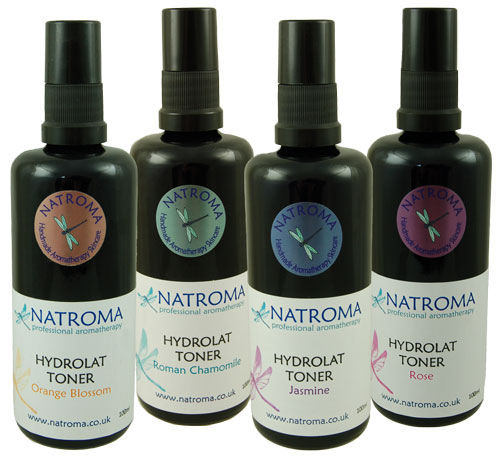Why your skin would want you to try using hydrolats
Hydrolats are also known as hydrosols, or flower waters. But what are they and how are they used?
 Genuine hydrolats are produced during the steam distillation of essential oils. We're going to explain how they are produced since some products are labelled as hydrolats, but they are actually essential oils dissolved in water (usually using a synthetic solubiliser).
Genuine hydrolats are produced during the steam distillation of essential oils. We're going to explain how they are produced since some products are labelled as hydrolats, but they are actually essential oils dissolved in water (usually using a synthetic solubiliser).
Essential oils are produced by a placing large quantities of botanical material into a distillation still. Heat is applied underneath to allow steam to pass through the plant material. The chemical constituents from the plant are released into the steam, which rises up through the still. The steam is then cooled so it condenses (try to remember fractional distillation from your chemistry lessons at school!), and the watery botanical mixture is collected in a vessel. Some parts of the mixture are oily and after settling these float on the top - this is the pure essential oil. But other parts of the plant material can dissolve in water - this is the hydrolat.
So the hydrolat contains the water soluble chemicals from the plant, whereas the essential oil contains the non-water soluble chemicals. Essential oils are highly concentrated, so this is why essential oils need to be diluted in a carrier oil before they are applied to the skin. The water based hydrolat on the other hand is much milder, and this is why hydrolats can be safely applied to the skin.
Hydrolats make wonderful natural skin toners, and are a good choice for using on children and the elderly where the pure essential oil might be too strong. It's a lovely gentle way of enjoying the therapeutic energies of various plants. But be warned - not all hydrolats smell like the plants they came from. Our organic rose hydrolat and organic orange blossom (neroli) hydrolat are lovely and we have just begun stocking a jasmine hydrolat which has a delicate aroma that's very typical of exotic jasmine. But others like our organic chamomile hydrolat can have a mild almost musty aroma (we do not stock German chamomile since most people find it quite strong, and we cannot recommend ylang ylang since it's anything but sweet!)
We love using organic hydrolats in our Natroma skincare products since they have a pH that is similar to human skin. Try sweeping a cotton pad soaked in hydrolat over your face and you'll immediately feel why they are so superior to commercial toners. There's no alcohol content whatsoever, so they leave the skin feeling soft, clean and gently hydrated. We have seen wonderful results when organic hydrolats are applied to sensitive skin, rosacea and acne.
Hydrolats unfortunately are delicate and this is why many sellers add preservatives to them to help to extend their shelf life. We choose not to do this, and instead purchase ours from reputable suppliers in smaller quantities to ensure they are 100% pure and fresh. We also keep ours refridgerated, and suggest that customers do the same. This is part of the reason why we also choose Miron glass since this special violet glass helps to protect the delicate organic hydrolat from damaging sunlight.
So if you haven't tried using hydrolats yet, we'd encourage you to give them a try. Switch away from overly complicated drying toner products and go back to using good old fashioned rosewater - just like our Grandmothers used to!
